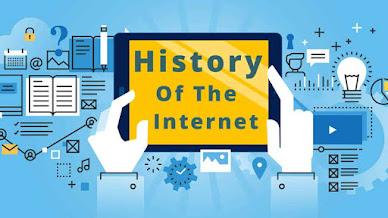Internet
Internet is an inter connection between several computers of different types belonging to various network all over the world.
It is a network of networks.
Millions of people throughout the world use internet to share information and ideas, to search information on any topic, etc.
Internet is an immensely complex combination of thousands of technology and dozens of service used by billions of people around
the world.
---- A decentralized system.
---- Composed of billions of file.
---- It is widely used.
---- Dynamic(Internet is the changing every minute of everyday. Thousands of websites and other resources are daily upload on internet).
Anatomy refers to study of structure of study of internet outlines the major components which are as follows:-
(I) Internet services.
(II) Elements of internet
(III) Uniform resource locator (URL)
(IV) Internet protocol
(a) Electronic mail :- In 1970 the first internet service for communicating cold email is used.
(b) File transfer protocol :- In 1973 an internet service design to share files among computers.
(c) Mailing list(1981)
(d) World wide web( WWW)(W3) :- In 1992 this service features user-friendly publicing. Web pages are creating using HTML.
(II) Elements of internet :- A simplified hierarical model of internet include client PC and server computers which entirely create a network.
(a) Client PC (personal computer) :- These are the computer that request information on internet. If your computer is connected to the internet then it is considered a client PC.
(b) Server computer :- A server is a computer that hold one or more websites a server can provide information to multiple clients simultaneously.
(III) Uniform Resource Locator (URL) :- URL are the unique address of the available resource . A URL is divided into four parts
(a) Transfer protocol :- https://
(b) Server name :- www.facebook.com
(c) Directory path :- /
(d) File name :- abhay maurya
https://www.facebook.com/abhaymaurya
(IV) Internet protocol :- IP is a method by which data is sent from one computer to another over the network.Each computer which is a connected to the internet has atleast one IP address which uniquely identifies one computer from another computer.
Growth and ownership of internet
The internet started as a united states government project in the year 1969, called the advanced research projects administration network (ARPANET).
In the late 1980s the national science Foundation of United States founded the development of a network using IP named as NSFNET to connect super computers network in America. In 1990s, ARPANET was dismantled and turned over to NSFNET. In 1993, NSF created inter NIC to provide internet services.
The backbone of the internet brink india at very high speed in year of 1994-95 , by AT and T and VSNL.
Characteristics of internet
---- Internet is a complex network.---- A decentralized system.
---- Composed of billions of file.
---- It is widely used.
---- Dynamic(Internet is the changing every minute of everyday. Thousands of websites and other resources are daily upload on internet).
Anatomy of internet
Anatomy refers to study of structure of study of internet outlines the major components which are as follows:-
(I) Internet services.
(II) Elements of internet
(III) Uniform resource locator (URL)
(IV) Internet protocol
(I) Internet services :- Internet is a combination of variety of service and most popular of them are as follows:-
(a) Electronic mail :- In 1970 the first internet service for communicating cold email is used.
(b) File transfer protocol :- In 1973 an internet service design to share files among computers.
(c) Mailing list(1981)
(d) World wide web( WWW)(W3) :- In 1992 this service features user-friendly publicing. Web pages are creating using HTML.
(II) Elements of internet :- A simplified hierarical model of internet include client PC and server computers which entirely create a network.
(a) Client PC (personal computer) :- These are the computer that request information on internet. If your computer is connected to the internet then it is considered a client PC.
(b) Server computer :- A server is a computer that hold one or more websites a server can provide information to multiple clients simultaneously.
(III) Uniform Resource Locator (URL) :- URL are the unique address of the available resource . A URL is divided into four parts
(a) Transfer protocol :- https://
(b) Server name :- www.facebook.com
(c) Directory path :- /
(d) File name :- abhay maurya
https://www.facebook.com/abhaymaurya
(IV) Internet protocol :- IP is a method by which data is sent from one computer to another over the network.Each computer which is a connected to the internet has atleast one IP address which uniquely identifies one computer from another computer.







